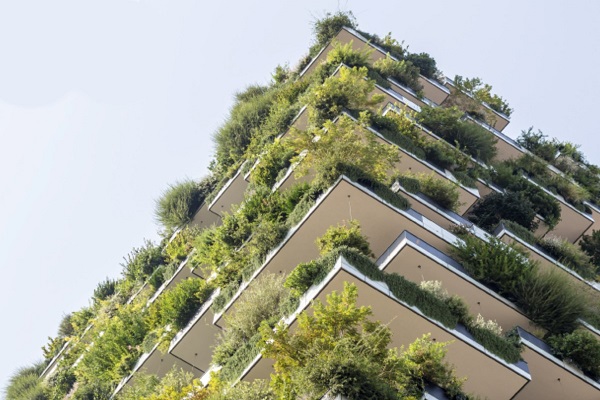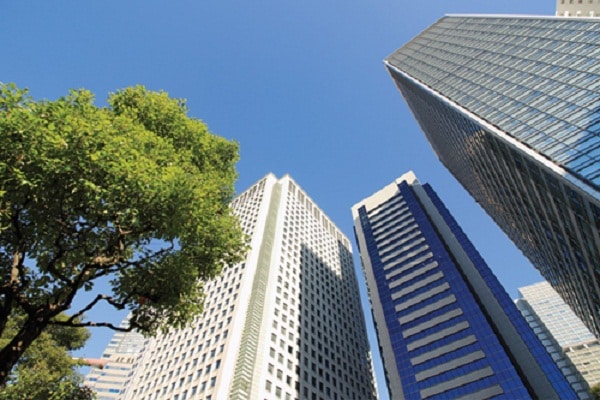According to the US Green Building Council (USGBC), the construction industry accounts for 40 per cent of worldwide energy usage and estimates that by 2030 emissions from commercial buildings will grow by 1.8 per cent.
This is one reason why many building owners are turning to Leadership in Energy and Environmental Design (LEED)-certified buildings. LEED certification is a globally recognised symbol of sustainability achievement and leadership and provides a framework for healthy, highly efficient, cost-saving green buildings.
One hundred and sixty countries and territories are participating in LEED projects, comprising over 15 billion square feet, and this latest survey reveals some intriguing statistics.
With the number of LEED registrations steadily increasing globally since the certification’s implementation in 1993, the US currently holds the number one position overall, with a total of 124,212 LEED projects.
Outside of the US, China takes second place with 5,678 LEED-certified projects, and Canada comes in third with 3,066 projects. India is fourth with 2,246 projects and the UAE fifth with 2,029. The only European country to make the top 10 is Spain, with a total of 951 LEED projects. The UK barely registers.
Adjusting the figures by population to reveal the top 10 countries for green buildings per 100,000 population throws up some curious revelations, with small island nations taking the top two positions: first, the Cayman Islands, then Guam. The rest of the top 10 introduces some more new faces, including Finland, Ireland, Hong Kong and Sweden.
The LEED rating system is used for all types of buildings, including offices, education, healthcare, hospitality, industrial and residential buildings. Despite the US’s and China’s commanding leads overall, drilling down to category-specific analysis reveals some unexpected winners in individual cities.
In the commercial/office sector, Prague in the Czech Republic takes top spot for LEED-certified buildings, followed by Zurich, Switzerland, then New Jersey, US.
Bangladesh, India, takes the top three spots for industrial, while the top three cities in the retail category are all in China. For the ‘Other’ category (which includes LEED buildings recorded as ‘unknown’ or ‘unclassified’ use and sectors such as ‘military’ where the numbers are currently too small to justify a separate category), Swedish towns claimed the number one and three positions.

The standard way to achieve LEED certification is to incorporate sustainable materials, environmentally friendly construction and energy-efficient systems into building plans. This can include energy-efficient lighting systems, energy-efficient HVAC systems, and low-flow water fixtures to reduce utility bills and help protect the environment.
Through such sustainable design, construction and operation, LEED buildings are helping to reduce carbon emissions and thus the certification is becoming one of the most demanded as the question of sustainability becomes increasingly important.
Sarah Broomfield, energy expert at Uswitch.com, said: “Sustainability is at the forefront of many peoples’ minds nowadays, so living or working in a city that has an abundance of green buildings can be a big selling point.
“Green buildings follow a range of sustainable regulations to ensure their footprint is reduced, but making your own home more energy efficient is also key to being sustainable”.
In light of this survey, Uswitch.com is reminding homeowners about three easy ways they can make their own homes more energy efficient and reduce the carbon impact associated with unnecessary heating, given that this energy use produces about a quarter of the UK’s total carbon emissions. To achieve the goal of a zero-carbon future, such energy-saving measures are essential.
- Insulation: insulating your home not only makes it more energy efficient, it is also one of the best things you can do to reduce your energy bills. Insulating your home will make your house warmer and more comfortable, whilst also reducing its impact on the environment in the process.
- Draught proofing: draught-proofing is a quick and cheap way to warm up your home and the improved ventilation and air flow control will help reduce damp and condensation.
- Windows and doors: if windows only have single glazing, it’s likely that up to 20 per cent of heat will be lost through them. Windows and doors account for a significant portion of heat loss, so any measures taken to prevent this happening will contribute to healthy savings on energy bills.
Full statistics and snazzy infographics are available from Uswitch.com.
Source: E&T











Sure, I’ll be happy to participate in the survey at https://www.surveymemo.co/! Thank you for letting me know about the chance to win an Iced coffee with French Vanilla for just $1. That sounds like a great deal! I want to take advantage of this golden opportunity, so I’ll make sure to visit the website and take the survey. I’m fortunate enough to win that delicious coffee. Thank you again for sharing!